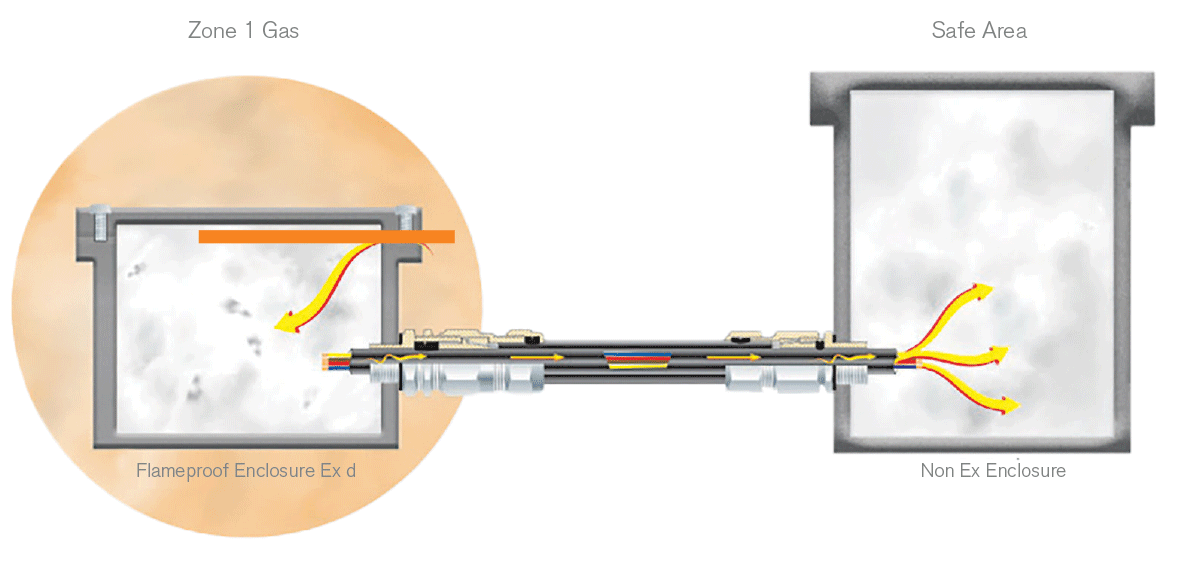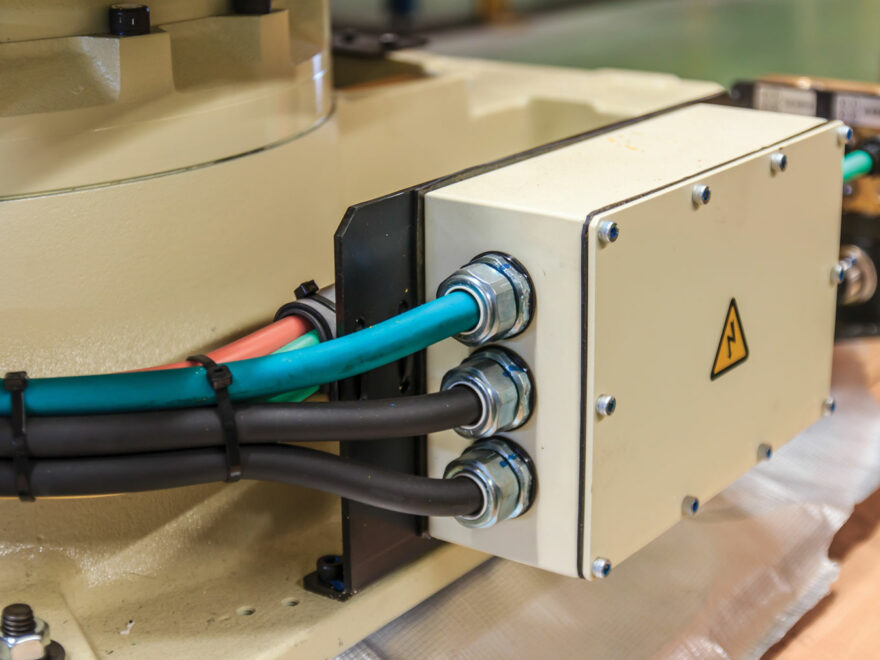Different Types and When to Use
Problems With Cable Construction
In order to comply with the installation codes of practice for hazardous areas, cable glands using elastomeric sealing rings should only be used on cables that are substantially round, compact with
an extruded bedding and have non-hygroscopic fillers such as Figure 1. However, this cable construction is not always possible especially when it comes to multi-core cables. Figures 2 and 3 show cables that should not be used with glands with elastomeric sealing rings.
When To Use Barrier Glands
IEC 60079-14: Explosive atmospheres; Electrical Installation, Design, Selection and Erection prescribes the selection of electrical equipment in hazardous areas. Knowledge of this Standard is imperative when selecting cables and cable glands for use in hazardous areas and merely referring to the product certification is not enough.
IEC 60079-14 Section 9.3.2: States that: Cables for fixed installations – shall be: a) sheathed with thermoplastic, thermosetting, or elastomeric material. They shall be circular and compact.
Any bedding or sheath shall be extruded. Fillers, if any, shall be non-hygroscopic; If cables do not pass one of these criteria and such cables link between a hazardous and non-hazardous area, the result may be flammable gas, liquid or vapour migration through the interstices of unfilled cables to the inside of; for example, control room equipment.
The situation is likely to be most acute with equipment installed in Zone 0 or Zone 1 locations (where the presence of a hazardous atmosphere has a greater likelihood and duration). If these conditions are likely to occur a barrier gland should be used.
Types of Barrier Glands
Two Part Epoxy Based Putty: For many years this was the only solution, it’s time consuming and reliant on accurate mixing and installation to get an effective seal to stop explosive gases and liquids diffusing down unfilled cables. If the putty isn’t mixed properly it can’t do its job and if it’s mixed properly but not accurately installed to fill all the voids properly, again it won’t maintain a gas and liquid seal in case of an explosion.
Sachet Mix Liquid Pour Resin: Although much faster than the putty option, this still takes almost twice as long as the CCG solution. The sachet mix pour resin has its own set of limitations, not least of which being the dependance on the installer to mix it properly before application into the gland. If the two part resin is not mixed properly, it can either go off too quickly or not set at all.
CCG VORTex™ Injection Resin™: This instant mixing, injecting resin has all but eliminated the hassles surrounding the preparation, mixing and applying of compounds/resins in Barrier Glands. The VORTEx® Injection Resin® system is instantly and 100% accurately mixed whilst being simultaneously injected into the barrier gland in one single action.
This reduces the installation time and gives an increased confidence in the installation compared to the epoxy putty or sachet mix liquid pour resins. The Injection resin flows into all the cable voids and interstices, completely filling the cable end.
This forms a 100% barrier to any migration of explosive gases or fluids down the inside of an unfilled hygroscopic cable. VORTEx® Injection Resin® barrier glands are tested and fully comply with the latest IECEx standards and installation codes of practice.

The use of barrier glands effectively blocks explosive gases from migrating down interstices of unfilled cable.
Ex d Equipment:
IEC 60079-14 Section 10.6.2: Requires the use of Barrier Glands for Ex d installations. Conventional flame-proof Ex d cable glands with seals are designed primarily to retain the explosive pressure within an Ex d enclosure and prevent the passage of hot gasses through the cable entry to the surrounding atmosphere.
The design of such cable glands relies on elastomeric seals sealing around the bedding of filled cable to perform this function. It has been established that if cables are not effectively filled, substantially round and are hygroscopic, hot gasses and pressure produced by an explosion within an Ex d enclosure can bypass the protective elastomeric seals of a conventional Ex d Gland.
These hot gases can be forced down the interstices of unfilled cable resulting in the
potential damage to the cable and/or non-Ex d equipment. The use of barrier glands effectively blocks these explosive gases from migrating down interstices of unfilled cable.
Barrier Glands are also required for the following equipment:
Ex p: Pressurized Equipment may also necessitate the use of Barrier Glands. Where necessary, to prevent the drop in pressure, the ingress of combustible gas or vapour by diffusion, or to prevent leakage of protective gas, wiring systems shall be sealed. If cables are not compact and filled, barrier glands should be used.
Ex nR: IEC 60079-14 Section -10.8 states; “The sealing of restricted-breathing enclosures shall be such as to maintain the restricted breathing properties of the enclosure. Where the cable used is not part of the certificate and/or instruction manual and is not effectively filled, it may be necessary to use a cable gland or other method (e.g. epoxy joint, shrinking tube) which seals around the individual conductors of the cable to prevent leakage from the enclosure”.



